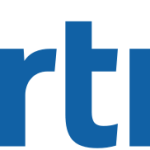- Industry: Consulting
- Number of terms: 1807
- Number of blossaries: 2
- Company Profile:
Gartner delivers technology research to global technology business leaders to make informed decisions on key initiatives.
Software-defined networks are emerging networking architectures that separate the control plane from the data plane in networking equipment. This is so that network intelligence and state are logically centralized, and the underlying network infrastructure is abstracted from applications.
Industry:Technology
Software support services are generally technical support or break/fix services that are delivered for specific software products. These services include revenue derived from long-term technical-support contracts or pay-as-you-go, incident-based support. Software support services typically include remote troubleshooting capabilities, installation assistance and basic usability assistance. Remote troubleshooting capabilities may be delivered via telephone and online communication media or without human assistance through automated means that reside on the customer’s device or are available on the Web.
Software support services may include new product installation services, installation of product updates, migrations for major releases of software, other types of proactive or reactive on-site services, and support for custom application or infrastructure software. Services may be delivered by a product vendor, a consulting firm or third-party software maintainers.
Software products and technologies covered under this category include commercial and custom operating systems, application software, and infrastructure software. Software support services do not include software license code updates and upgrades, which vendors often report as software maintenance.
The segments covered in software support map directly to market segments covered in Gartner software market statistics.
Industry:Technology
A healthcare committee charged with ensuring that patients are not placed at risk by implemented software solutions. SOCs contain representative from all aspects of the healthcare enterprise. It has been suggested that SOCs be formed along the lines of The Joint Commission’s institutional review boards (IRBs). IRBs typically are composed of risk management lawyers, medical ethicists, physicians and other interested parties within the care delivery organization (CDO). Because of the technical nature of the task, an SOC must have information systems (IS) representation. An SOC should meet on a regular basis to review all current and planned medical software implementations. In addition, it should form, and possibly enforce, a policy designed to ensure patient safety where medical software is concerned. Specific SOC responsibilities include validating that applications perform reliably and as expected, for example, by creating and running trial scenarios looking at both system and clinical functionality. A SOC should ensure that all decision support applications are based on accurate data, that they are implemented correctly and that the rule base is kept current. It should also examine how the various packages operate in tandem, paying close attention to combinations of functions that could potentially lead to errors that place patients at risk.
Industry:Technology
Updating software, adding new functions, fixing bugs and solving problems. Technology vendors often sell a maintenance contract with their software. This contract is usually calculated as an annual fee based on some percentage of the total software cost. It generally provides for overall support and maintenance of a software product, including applications. Support may include telephone assistance time as well.
Industry:Technology
A mechanism for systematically ensuring compliance with system vendor and independent software vendor (ISV) software licenses — for example, maximum users, maximum nodes and maximum MIPS.
Industry:Technology
Should support the concept of a transaction, including atomicity (either all changes take place or none take effect) to enable operating-system or application data recovery mechanisms to be implemented.
Industry:Technology
A set of development utilities for writing software applications, usually associated with specific environments (e.g., the Windows SDK).
Industry:Technology
Project management, specifications, design, programming, testing, installation and training associated with a specific application development project of any size.
Industry:Technology
Also known as “software change management,” SCM is a methodology for software problem/change request initiation and tracking; change impact analysis; version control; security administration of software assets; software promotion; quality reviews; and software distribution.
Industry:Technology
Software change and configuration management (SCCM — mainframe and distributed) tools implement a set of disciplines used to stabilize, track and control the versions and configurations of a set of software items and also may include development change management, defect tracking, change automation, development release management, integrated test management, integrated build management and other related processes.
Industry:Technology
